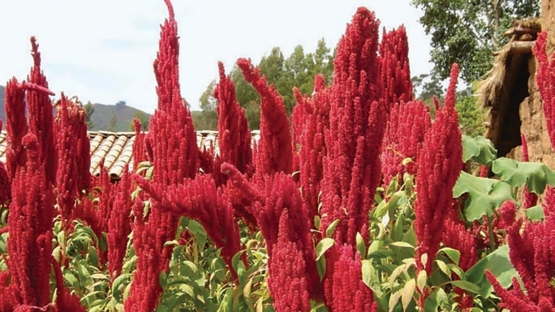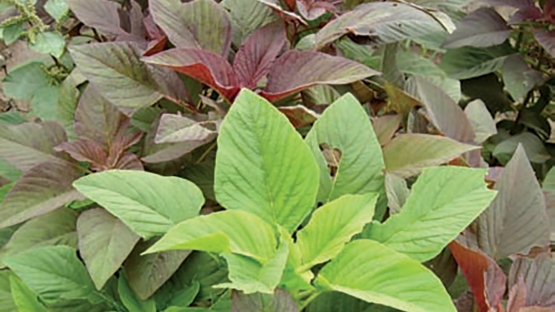It’s a big leap from the ancient Incas of the high Andes of Peru to NASA astronauts on space journeys, but kiwicha – a highly nutritious Andean grain – has been part of both worlds. And now, thanks to the support of the Joint FAO/IAEA Division of Nuclear Techniques in Food and Agriculture in applying nuclear techniques to kiwicha breeding, the crop has new traits that have changed its appearance, improved its yield, and given it a new role as an export crop with potential to improve the quality of life for people who still farm in the high Andes region where the Incas planted kiwicha thousands of years ago.
From Incan tombs to outer space, kiwicha (Amaranthus caudatus) grains have taken flight in recent decades, with modern science proving that the ancients of the Peruvian Andes knew what they were doing when it came to making nutritional decisions. Growing at altitudes of 3–5000 meters, scientists have determined that this staple food of the Incas has 30 percent more protein than common cereals such a rice and wheat, it reduces hypertension and cholesterol, is high in dietary fiber and minerals such as iron, magnesium and manganese, and is gluten free. With that knowledge, these grains that have been found sprinkled around 4000-year-old Andean tombs also gained the respect of the US National Aeronautics and Space Administration (NASA). NASA included the nutritious kiwicha as a supplement in astronaut meals.
Thanks to millennia of adaptation, kiwicha has natural resistance to pests, which means it needs no or very little application of pesticides and fungicides. This not only makes it safer for consumers and less expensive to produce because farmers do not need to buy the inputs, it also gives it entree to the high-end organic markets.
In spite of the fact that kiwicha was a well-adapted staple in the Andes and had provided local people important nutritional benefits for millennia, when the Spanish arrived in the 1500s, they replaced kiwicha cultivations with wheat and barley. Pockets of kiwicha still grew wild at high altitudes, but it remained nearly forgotten until modern scientists began looking at its potential for improving local nutrition and as an export crop to markets hungry for nutritious health foods. Peru has a population of 29 million, with 34.8 percent living in poverty. For the 3 million people living from subsistence agriculture in the Andean highlands, increasing export potential of kiwicha could have great benefit for the area.



